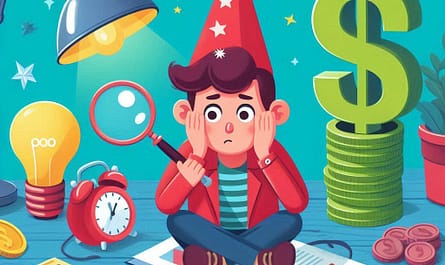Stop Leaving Money on the Table”

We’ve all seen those flashy success stories — “I had a $50k/$100k/$1M launch!” It’s a flex, no doubt. But here’s the thing: for most products or services, the actual launch isn’t the most important part. In fact, putting too much emphasis on the initial launch can leave a lot of money on the table and hurt your long-term revenue potential.
Today, we’re fixing that.
When it comes to launches, there are two types of products: time-sensitive, ephemeral products and evergreen products. Think of it like launching sneakers or a restaurant.
👟 Are You Launching Sneakers or a Restaurant?
Let’s talk about sneakers first. Nike recently announced its first shoe release with all-star baseball player Devin Booker. Like their previous launches, this one will generate a ton of media buzz, packed launch parties, influencer promotions, and celebrity endorsements.
Sneakers, like most fashion items, are ephemeral. Nike launches a new shoe each season, and rarely revisits last season’s sensation. Sure, some sneakers become classics that gain value over time, but those are the exceptions. For most sneaker enthusiasts, the thrill lies in what’s new. They religiously follow launch calendars, knowing that fashion trends move fast, and last year’s shoes are already “out.”
Because of this short lifespan, Nike and other brands pour almost their entire budget into the launch phase. They need to create massive hype and get their products in the hands of celebrities, micro-influencers, and their target audience immediately. Most of the sales happen right around launch time — and if they miss that window, they lose.
🍽️ But What If You’re Launching a Restaurant?
Now, let’s compare this to launching a restaurant. The launch day matters here too. You want local influencers talking about your spot, a packed house on day one, and great first impressions. But after launch day? The strategy shifts.
For restaurants, the real money isn’t made in the first week — it’s made over months and years. A restaurant thrives when it builds a loyal customer base, delivers consistent quality, and gets repeat business. No one opens a restaurant hoping to fill all the tables on day one and then forget about the rest. They focus on long-term growth. They optimize menus, offer loyalty programs, and create experiences that keep customers coming back.
🤔 So, Which One Are You?
When you’re planning your next launch, ask yourself: Are you launching sneakers or a restaurant?
- If your product is ephemeral, like a seasonal fashion line or a time-sensitive offer, it’s okay to put everything into a high-impact, short-term launch. You’re aiming for maximum attention and sales upfront.
- If your product is evergreen, like a SaaS platform, an online course, or a membership service, your focus should shift beyond the launch. A strong launch is great, but long-term growth requires nurturing leads, offering value post-launch, and keeping your audience engaged over time.
🎯 Why “Launch and Forget” Is a Losing Strategy
The biggest mistake many creators and founders make is treating evergreen products like sneakers — they pour all their energy and budget into a big splashy launch, then move on, assuming the product will sell itself after that. Spoiler alert: it won’t.
Without a follow-up strategy, evergreen products miss out on long-term revenue. You’re leaving money on the table by not:
✅ Nurturing leads that didn’t convert during the launch.
✅ Upselling or cross-selling related products.
✅ Continuing to provide value that keeps customers engaged.
✅ Retargeting people who showed interest but didn’t buy.
📈 The Right Way: Treat It Like a Restaurant
If you’re launching an evergreen product, think like a restaurateur. Yes, get people excited for day one — but don’t stop there. Have a strategy in place for what happens after the initial buzz.
Here’s how:
- Build a Post-Launch Nurture Sequence: Stay in touch with leads who didn’t buy yet. Provide value, answer questions, and offer incentives to bring them back.
- Offer Ongoing Support and Upsells: Once someone buys, continue offering value. Upsell relevant products or services that enhance their experience.
- Engage Your Audience Regularly: Email newsletters, content updates, and exclusive offers can keep your audience engaged long after launch day.
- Test and Optimize Continuously: Collect feedback and refine your product or service. Just like a restaurant tweaks its menu to satisfy regular customers, optimize your offering over time.
💡 Final Thoughts: Don’t Just Launch — Sustain
A successful launch feels amazing, but long-term success happens when you treat your product like a restaurant, not a pair of sneakers. Whether you’re building an audience, growing a membership, or selling a digital product, the key is to think beyond day one.
So, ask yourself: Are you launching something trendy that fades fast or something that can grow and thrive over time?
If you get this right, you won’t just have a successful launch — you’ll have a thriving business that keeps delivering value (and revenue) long after the buzz dies down. 🚀💸



